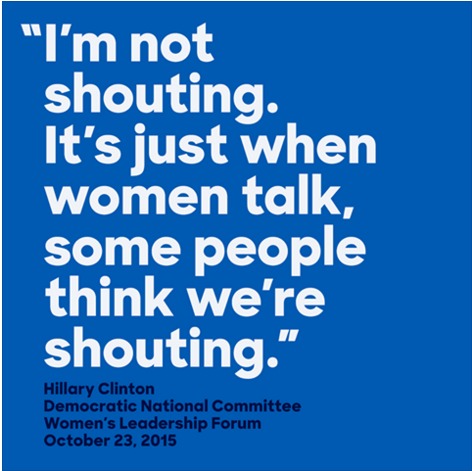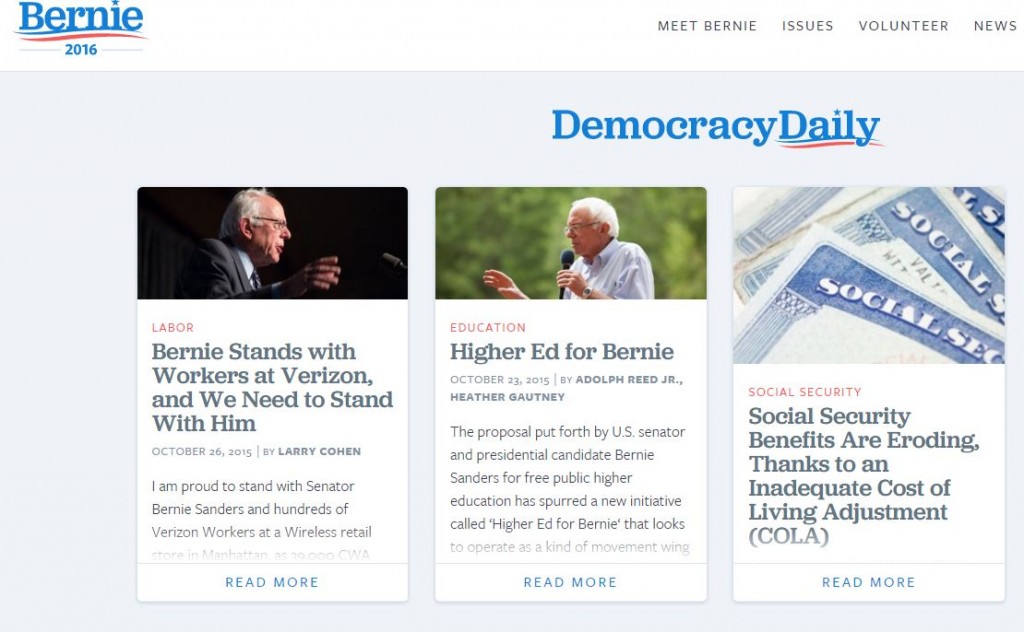As of this writing, there are 19 candidates running for president, and if you haven’t noticed, they’re using any means necessary to advertise their respective campaigns. Traditional mediums for campaigning such as radio and television are proving to be less effective as technology advances and audience sizes shrink. Instead, many 2016 campaigns are beginning to focus their efforts on new marketing tactics in the digital world.
Social media is the main place candidates are looking to use for marketing. According to Pew research, 61% of millennial get their news from Facebook. This means that millennial, potentially the largest voter group in 2016, will be forming their opinions based on what they see as they casually peruse Facebook. So, if candidates want to reach the millennial voters, they should focus on getting seen and shared through social networks like Facebook or Twitter.
Many candidates are beginning to use content marketing for their campaigns. They provide readers with useful content across various social media platforms in order to win over voters and reach a large audience.
There is more to content marketing than just posting a lot of articles, and it appears candidates in both parties are already aware of this. Here are three content marketing guidelines we commonly use, and some ways candidates are following them.
1. Content should be useful.
If you want to create content people want to view and share, it should be useful for the reader. Bernie Sanders’ website has a great example of shareable content that advertises his campaign while being useful for voters. His website has a section call “Democracy Daily” which includes daily articles about various political issues, focusing on key points the Bernie campaign is interested in. While other campaigns often post news about their candidate, the Democracy Daily articles are about issues, not Bernie Sanders. They do not specifically tell voters to vote for Bernie, but rather emphasize where Sanders stands on various issues.
By keeping the headlines neutral, these articles are more likely to be shared than pointed news articles about a candidate. Readers will not feel like sharing the link is an “endorsement.” Neutral headlines also mean someone who does not support Bernie Sanders will still be likely to read the article if they are interested in the subject. By focusing on issues rather than a specific candidate, more people may be able to find this article through broad searches, especially people who would not normally be searching for articles about Bernie Sanders.
By providing informative, broad, and shareable news articles, Bernie Sanders is able to introduce his policies and ideals to a greater audience.
2. Content should be easily digestible.
People like things that are easy to understand. If a politician wants to appeal to the masses, he should campaign in a manner that is accessible to all. Sure, there may be some lengthy political journalism pieces that inform lots about his platforms, but the average person might not have the time or energy to read such an article.
Hilary Clinton has figured out a simple way to get her messages out. If you take a look are her Facebook page, you will see many images with quotes she has said. These quotes inform viewers about her politics, but they are also brief and accessible. She includes the sources to these quotes, which means those interested in getting more context can look up the full transcript. Furthermore, they are laid out in an aesthetically pleasing minimalist graphic, which appeals in our image-dominated internet culture. One can glance at these shareable images quickly and get a sense of Hilary’s ideas.

Hillary’s hoping to be heard with this image.
3. Content should be shareable.
Great content means nothing if it’s not getting shared. One way to encourage sharing is to include a call-to-action in your posts. This might be as simple as adding a share button or asking readers to spread the content among their friends.
Republican candidate Marco Rubio is taking advantage of shareable content through the “Team Marco” of his website. Here, you will find information about how to share Rubio’s message online. He includes downloadable images for social media profiles. There is a list of Rubio-related articles with convenient sharing buttons, so that readers can quickly post to social media. This call-to-action helps propel the sharing of these carefully selected articles.
He also includes links to non-official social media pages, encouraging readers to join these groups to further his message. It’s like crowdsourcing for politics.
As the election continues we will begin to see more examples of content marketing from these aspiring politicians. Although it may be hard to tell who will be the next president of the united States, its clear that content marketing will play a big role in winning over voters.
Not running for president, but still interested in using content marketing to attract readers? Learn more by checking out the articles in Media Shower’s free Content Marketing Academy.

